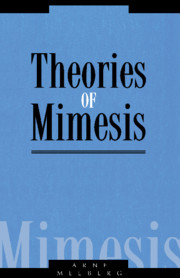2 - Cervantes' “Imitación”
Published online by Cambridge University Press: 04 December 2009
Summary
Naming
Cervantes' great novel came out in two parts, in 1605 and 1616. It lacks a title page naming it, for example, a “novel” and thereby telling us to read it like a “novel” – the name and the genre of the “novel” were not yet invented. Neither is it called a “romance of chivalry,” in spite of referring constantly to this genre, which in Spain at that time was simply called books of knighthood (“libros de caballería”). Instead, the main character has become the title character and given the book his name – Don Quijote – thereby starting a long and far-reaching tradition of interchange between person and fiction. Up to our century, and formidably in the last, it was increasingly common to give a personal name or signature to the text of fiction known as “novel.”
But still this book – the first book of its kind, when it comes to naming – is not called after the real name of its title character. The first thing we are told about Don Quijote in the first chapter of the “novel” is, after all, that he gives himself the name Don Quijote, but that really, i.e. in his normal or so to speak bourgeois reality, he has quite another name. And the narrator pretends not to be sure what it is: “They say that his surname was Quijada or Quesada.”
- Type
- Chapter
- Information
- Theories of Mimesis , pp. 51 - 84Publisher: Cambridge University PressPrint publication year: 1995



